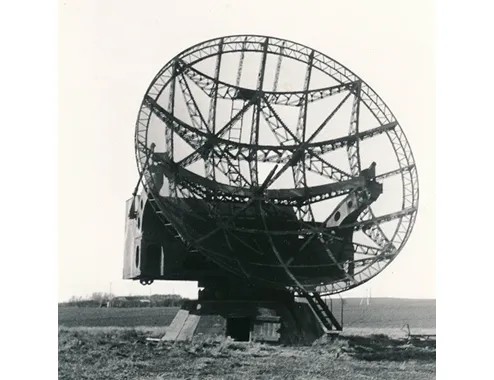Many Allied bombers chose routes north of the Wadden Islands. This allowed them to remain over the sea for as long as possible and avoid German anti-aircraft guns (Flak) on the mainland. For the German occupiers, this area became the outer edge of the “Thousand-Year Reich,” requiring strict surveillance.
For this reason, the occupiers built radar posts along the entire Dutch coast. One of the first was the Tiger Radar Position on Terschelling. From here, the Germans were able to intercept Allied aircraft as early as 1941.
The Arrival of Radar
The use of radar—short for Radio Detection and Ranging—profoundly changed the air war. This technology made it possible to detect aircraft hundreds of kilometers away and track their course. Where lookout posts had previously been relied upon, the Germans could now respond much more quickly. At Radar Position Tiger, approaching bombers were sometimes detected from as far as 300 kilometers away. The data was sent to the Bertha command bunker, where a large sector map was kept, recording all reports and positions.
The Role of the Jaegerleit Officer
When the Luftwaffe decided to deploy fighters, the Jaegerleit Officer (JLO) took command. He was in radio contact with the pilots and gave instructions on course and altitude, guiding the German fighters from the ground to their targets.
Radar Position Tiger thus became a crucial link in air defense. Without this early warning, German fighters would often have arrived too late, and the Allies could have reached their targets almost unimpeded. Although the war was ultimately won by the Allies, Radar Position Tiger demonstrated how technological innovation could influence the course of the battle.
